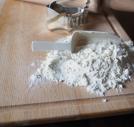How to Help Your Child with Diabetes Stay Active
When your child struggles with diabetes, there are many things that may worry and concern you about his condition and whether he will be able to lead a normal life.
Children like to experience sharing with other kids their age, being part of a team and participating in sports. If this is something your child is interested in, diabetes should not be an obstacle for him.
As with adults, exercise is highly recommended as an additional method to regulate diabetes in children.
How Exercise Can Help
Exercise can be beneficial for your child in many ways. For example, exercise strengthens bones and muscles and can also reduce risk of heart disease. Exercise can also make insulin work better in the body, which helps your child keep blood sugar levels in a healthier range.
Weight management is an important part of diabetes care, and exercise can help your child to reach and maintain a healthy weight. Although a healthy diet is essential to weight management, it is not enough. It is recommended that you incorporate exercise into your child's routine as well. In people with either type 1 or type 2 diabetes, having too much body fat can keep insulin from regulating blood sugar levels.
Additionally, exercise can have many other wonderful benefits in your child's life. With exercise, kids can develop greater physical abilities such as better coordination, balance, strength and endurance. Furthermore, joining a sports team encourages your child to make friends and meet new people. Becoming skilled in a sport can also bring about a boost in self-esteem and confidence for your child.
Preparing for Exercise
Before you choose to start your child on a new exercise regimen, it is recommended that you talk to a doctor. Discuss whether you should make any changes to your child's testing schedule or medication or if there are other things you should be aware of before your child takes up a sport.
Remember that your child may also need your emotional support if he is starting out in a new sport. However, it is also important to keep in mind that if you are fearful and keep your child from participating, you could be reinforcing your child's sense of being different, sick or fragile. Always keep a positive attitude when embarking on a new activity with your child.
During Exercise
While exercising, your child could experience low blood sugar, also known as hypoglycemia, or high blood sugar, called hyperglycemia. Hypoglycemia can happen during or after exercise. This occurs because the body has used up much of its stored sugar.
Some of the signs of low blood sugar include sweating, dizziness, shakiness, weakness, anxiety, hunger, headaches, problems concentrating and confusion. In more severe cases, low blood sugar can cause fainting or seizures as well. Kids with diabetes may need to check blood sugar levels and have an extra snack to prevent low blood sugar levels.
Hyperglycemia can occur during exercise as well. This happens because during exercise the muscles need more energy and the body responds by releasing extra glucose into the blood stream. If there is not enough insulin, the sugar will remain in the blood, causing a person to urinate more, which can lead to dehydration.
It is especially important to watch out for this during exercise, as your child could become dehydrated more quickly due to the additional loss of water from sweating and breathing hard during exercise. Other signs of high blood sugar include excessive thirst, fatigue, weakness and blurry vision.
Tips for Starting Physical Activity
Here are some general tips to keep in mind when starting up a new exercise routine:
- Adjust blood testing schedules
- Take insulin on schedule
- Eat right and try to maintain a meal plan
- Have snacks and water readily available
- Remember to pack testing supplies, medications and anything else your child might need in case of an emergency
- Inform coaches, camp leaders and teachers about your child's condition
Any kind of exercise is great. You can start with simple activities like walking the dog and eventually move to something more physical like joining a team sport. Health experts recommend that you set a goal for your child to exercise 60 minutes a day for five to six days a week. Try to keep in mind that new exercise habits might be hard for kids to adopt at first, but experiencing the benefits of exercise can help kids stick to their program.
Source: KidsHealth.org


































